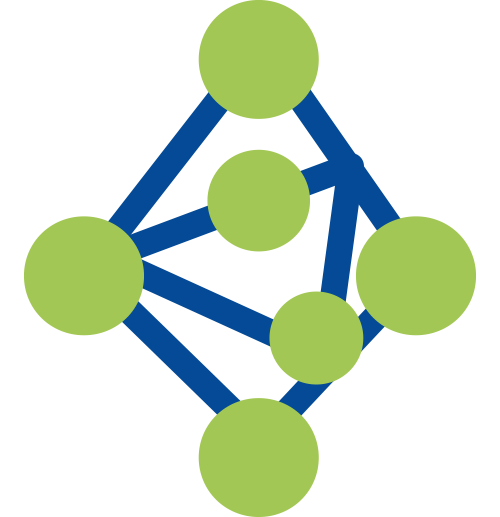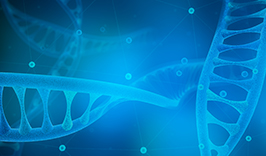The Dynegene QuarStar Human All Exon Probes 4.0 Tumor Version is built upon the QuarStar Human All Exon Probes 4.0 Standard Version. Leveraging superior probe design algorithms, it’s specifically designed to additionally target tumor-related genes (1000+ genes), fusions, MSI, HRD, and the HLA region, covering approximately 46Mb of the human genome. AI algorithm-based Probe design and Boosting strategies, combined with high-performance double-stranded DNA probe synthesis technology, further streamline the probe regions while enhancing capture specificity and uniformity, significantly reducing detection costs.
Highlights
1/ AI model-based probe design algorithm enhances both capture specificity and uniformity, delivering excellent performance.

Figure 1. Coverage and capture performance of QuarStar Human All Exon Probes 4.0 Tumor Version
2/ Compatible with various hybridization methods
The QuarStar Human All Exon Probes 4.0 Tumor Version supports both single-plex and multiplex hybridizations, with stable and excellent performance in both rapid hybridization (data shown is for 1h hybridization; ultra-fast hybridization as quick as 30 minutes is supported) and overnight hybridization, offering flexible, convenient, and cost-controllable detection.
|

Figure 2. Capture performance with different hybridization times.
|

Figure 3. Capture performance for single-plex/multiplex hybridization.
|
3/ Streamlined probe design, coupled with differential sequencing depth, enables more efficient data usage and more sensitive, comprehensive detection.
Common WES products typically achieve an average effective depth of ~100x at 10G data volume, sufficient for genetic disease detection. However, complex oncology detection (FFPE sample degradation, low tumor cell content, tumor heterogeneity, etc.) demands higher effective sequencing depth from WES.
The Dynegene QuarStar Human All Exon Probes 4.0 Tumor Version achieves an average effective depth of >150x (~190x) for general gene exons, >450x for tumor-related genes, and >650x for hotspot regions with 15G total sequencing data. This ensures accurate detection of hotspot genes and significantly improves the detection accuracy of low-frequency variants and potential targets.

Figure 4. Mean depth for different probe groups in the QuarStar Human All Exon Probes 4.0
|

a) General genes: ~200x
|

b) Tumor-related genes: ~500x
|

c) Tumor hotspot genes: ~900x
|
Figure 5. Differential capture depth in different regions (Data from the same sample) in IGV.
Beyond high exon coverage, the Dynegene QuarStar Human All Exon Probes 4.0 Tumor Version also features enhanced design for fusion hotspot genes and their high-frequency intronic regions. Highly uniform intron coverage ensures stable detection of DNA-level fusion events!
|

a) ALK CDS & intron: ~900x
|

b) ROS1 CDS & intron: ~800x
|

c) RET CDS & intron: ~1000x
|

d) NTRK1 CDS & intron: ~1000x
|
Figure 6. Coverage for partial fusion hotspot genes and introns in IGV.
HRD detection: 23,157 high-frequency heterozygous SNPs, verified by WGS, with balanced GC content and high specificity, are selected to uniformly cover the whole human genome. In synergistic WES detection, the effective sequencing depth is essentially consistent with general CDS regions. This allows for precise detection of "genomic scars" caused by HRD (LOH/TAI/LST, etc.) while further reducing sequencing costs.
4/ Accurate and sensitive variant detection
a. High sequencing data utilization efficiency and higher effective exome depth enable more accurate and sensitive detection of positive variants.
| Gene: AA change |
ddPCR_AF |
Lot1 |
Lot2 |
| Operator A-1 |
Operator A-2 |
Operator B-1 |
Operator B-2 |
| EGFR:p.E746_A750del |
1.85% |
2.21% |
1.39% |
1.87% |
1.55% |
| EGFR:p.S768I |
2.68% |
19.20% |
3.16% |
3.05% |
3.10% |
| EGFR:p.T790M |
3.00% |
2.28% |
2.29% |
2.44% |
2.75% |
| EGFR:p.C797S |
4.01% |
4.85% |
4.89% |
3.99% |
5.60% |
| EGFR:p.L858R |
5.07% |
1.88% |
2.36% |
1.65% |
3.02% |
| EGFR:p.G719A |
5.78% |
4.77% |
5.50% |
6.39% |
6.18% |
| FGFR3:p.S249C |
3.09% |
2.45% |
2.46% |
3.22% |
2.30% |
| KRAS:p.A146T |
2.59% |
2.34% |
3.38% |
2.99% |
2.49% |
| KRAS:p.Q61H |
4.57% |
4.40% |
6.45% |
4.44% |
5.40% |
| KRAS:p.G13D |
8.66% |
9.11% |
9.23% |
8.67% |
7.55% |
| NRAS:p.G12D |
6.54% |
6.40% |
7.00% |
6.54% |
7.15% |
| NRAS:p.Q61K |
12.81% |
13.22% |
12.62% |
14.47% |
13.73% |
Table 1. Positive standard sample detection statistics.
Note: Assuming "EGFR3pS249C" is a typo for p.S784C and "NRASpG6K" for p.Q61K based on common variants.
b. Fusion detection example

Figure 7. Fusion detection example.
Low-frequency fusion detection: 2.08% (ddPCR)
CD74_ENST00000009530.7:intron:6|+chr5:149783653___ROS1_ENST00000368508.3:intron:33|+chr6:117646754
Data Description
Human genomic DNA standard (NA12878) and commercial mutation standards (CBP90043, COBIOER) were used for DNA enzymatic fragmentation library preparation. 500 ng of prepared library was used as input for overnight/rapid (1h) hybridization capture experiments. Sequencing was performed on the MGI sequencing platform (T7).
 NGSHybridization Capture DNA Probe QuarStar Human All Exon Probes 4.0 (Tumor) QuarStar Human All Exon Probes 4.0 (Standard) QuarStar Liquid Pan-Cancer Panel 3.0 QuarStar Pan-Cancer Lite Panel 3.0 QuarStar Pan-Cancer Fusion Panel 1.0 QuarStar Pan Cancer Panel 1.0 Hybridization Capture RNA Probe QuarXeq Human All Exon Probes 3.0 HRD panel Library Preparation DNA Library Preparation Kit Fragmentation Reagent mRNA Capture Kit rRNA Depletion Kit QuarPro Superfast T4 DNA Ligase Hybridization Capture QuarHyb Super DNA Reagent Kit QuarHyb DNA Plus 2 Reagent Kit QuarHyb DNA Reagent Kit Plus QuarHyb One Reagent Kit QuarHyb Super Reagent Kit Pro Dynegene Adapter Family Dynegene Blocker Family Multiplex PCR QuarMultiple BRCA Amplicon QuarMultiple PCR Capture Kit 2.0 PathoSeq 450 Pathogen Library Corollary Reagent Streptavidin magnetic beads Equipment and Software The iQuars50 NGS Prep System
NGSHybridization Capture DNA Probe QuarStar Human All Exon Probes 4.0 (Tumor) QuarStar Human All Exon Probes 4.0 (Standard) QuarStar Liquid Pan-Cancer Panel 3.0 QuarStar Pan-Cancer Lite Panel 3.0 QuarStar Pan-Cancer Fusion Panel 1.0 QuarStar Pan Cancer Panel 1.0 Hybridization Capture RNA Probe QuarXeq Human All Exon Probes 3.0 HRD panel Library Preparation DNA Library Preparation Kit Fragmentation Reagent mRNA Capture Kit rRNA Depletion Kit QuarPro Superfast T4 DNA Ligase Hybridization Capture QuarHyb Super DNA Reagent Kit QuarHyb DNA Plus 2 Reagent Kit QuarHyb DNA Reagent Kit Plus QuarHyb One Reagent Kit QuarHyb Super Reagent Kit Pro Dynegene Adapter Family Dynegene Blocker Family Multiplex PCR QuarMultiple BRCA Amplicon QuarMultiple PCR Capture Kit 2.0 PathoSeq 450 Pathogen Library Corollary Reagent Streptavidin magnetic beads Equipment and Software The iQuars50 NGS Prep System Primers and Probes
Primers and Probes RNA SynthesissgRNA miRNA siRNA
RNA SynthesissgRNA miRNA siRNA



 Gene Synthesis
Gene Synthesis Oligo Pools
Oligo Pools CRISPR sgRNA Library
CRISPR sgRNA Library Antibody Library
Antibody Library Variant Library
Variant Library















 Tel: 400-017-9077
Tel: 400-017-9077 Address: Floor 2, Building 5, No. 248 Guanghua Road, Minhang District, Shanghai
Address: Floor 2, Building 5, No. 248 Guanghua Road, Minhang District, Shanghai Email:
Email: 







